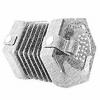
michelv
Members-
Posts
96 -
Joined
-
Last visited
michelv's Achievements

Advanced Member (3/6)
-
Yes, the two sites are up again. There is this very old one which haven't been updated for ages: http://www.tangosite.com/ from the days I played Argentinian tango; and there is the one with music suitable for English concertina: http://www.tangosite.com/concertina/. Both are hosted by the company I work for and use a very old application I developed, and they will not stay there forever. I'm not sure if I can muster the courage of moving them to my own server, which implements moving the data and building a new app in PHP for them... My current site with sheet music is in Dutch (for now): http://michelv.be/folkbrigade/
-
Hi all, I'm Michel Van der Meiren, and tangosite and tangosite/concertina belong to me. Both sites are down due to a DNS change. I'll try and fix this this weekend... I played Argentinian tango with Dirk Van Esbroeck and Alfredo Marcucci until they both passed away. Now I'm playing English concertina. At present, I am recovering from a medical period in my life. That's why the site problems aren't fixed yet. I'll post here again when the (old) sites are back online. Newer material is on my new site, being: http://michelv.be/folkbrigade/ (currently in Dutch only) Michel
-
Hi all, Thanks for mentioning my site. Actually, I'm from Flanders, so there's a lot of Flemish stuff on it ;-) http://www.tangosite.com/concertina Michel
-
Hello, especially to the rare breed of concertina players living in and around Belgium and the Netherlands: The International Concertina Association presents the Concertina in the Low Countries: Belgium and the Netherlands. On Saturday 11 August 2012 two workshops are being given by Alex Wade In "De Schaapskooi" in Schijndel, Netherlands. For all concertinaplayers of all levels. More info: http://www.concertina.org/ica/index.php/news/37-spotted/191-11-august-2012-concertina-in-the-low-countries Not only is Alex a formidable concertina player and teacher, it's also a rare opportunity to meet old and new concertina friends! Please inform us when you are coming. See you there ! Michel
-
Here's a documentory on Concertinas in Bolivia:
-
Nice dutch band with Anglo player
michelv replied to michael sam wild's topic in Concertina Videos & Music
Well, I know Jan, the anglo player, lives in Ghent. This is his facebook page: http://www.facebook.com/home.php#!/jan.debrabandere.9 -
Nice dutch band with Anglo player
michelv replied to michael sam wild's topic in Concertina Videos & Music
It's a Belgium band... -
Try cello or bassoon music.
-
Hello Paul. I like your tunebooks very much! As for the Blue eyed one, I play together with a very experienced accordeon player, and he came up with the chords. And indeed, it has to be played uneven, as most hornpipes. Careful with the rhytms though: 3/4 could be a lot of things: a slow air, a mazurka, a waltz or even a bourrée. 6/8 could be a jig, but also a march (e.g. 93 not out, Liberty Bell). Polkas are written in 2/4 most of the time, as they should be: they have a distinct 2-beat feel. 2/4 could also be something entirely different, as a bourrée in 2 times etc. Most hornpipes are written in 4/4. But so are reels, schottisches, etc. And to make things even more complicated, tunes could start as a march in 6/8 and end up being played by most as a jig. Slow airs in 3/4 could end up as a waltz. And some polkas were originally played uneven, but because this does not show in the sheet music, this is sometimes forgotten by players who learn from sheet music instead of by ear. The Blue eyed should however remain a set dance I think, because the number of bars does not fit a hornpipe.
-
What a coincidence... I discovered the same tune a few weeks ago and it's far out my favorite since. I found it in one of the Paul Hardy's tunebooks. But I asked around and it is in fact a set dance and NOT a hornpipe, so it would have to be played even slower as a hornpipe: one dances very complicated stuff to it... I also found the chords in the PH tunebook a bit too much. More simple chords: My link
-
I've uploaded the complete book in 2 parts: http://www.concertina.org/ica/index.php/news/37-spotted/161-the-concertina-book-of-music Please let me know if anything is missing.
-
Hello everyone. Alan has sent me the missing pages and I've zipped them and made them available from our website: http://www.concertina.org/ica/index.php/news/37-spotted/161-the-concertina-book-of-music. Should I zip the first part from http://www.juliettedaum.com/concertina.html as well? Thanks, Alan.
-
Concertina & Squeezebox Magazine "reader's tapes"
michelv replied to RatFace's topic in Concertina Videos & Music
The readers tapes are now moved to: http://www.concertina.org/ica/index.php/sound-archive. Same files, nicer page... -
Here's the original tune:
-
That's a kontradans (contredanse), usually one or two treble instruments (e.g. violins or sometimes also brass instruments of that period) playing the melody and accompagned by harpsichord or viola da gamba who played 'basso continuo'. This was the popular dance music in the 18th century. In the 'Hollantse Boerenlieties' manuscript, only the melodies are given. In other manuscripts of that time, sometimes the bassline and/or basso continuo notation was also present, e.g in: 'Gentse Contradansen' or 'De Gruijtter manuscript' found in Belgium and dating from the same period. Although it was not uncommon to play 'boring' melodies dotted to make them more interesting, in this case I would play this one straight. This is the time before polka, waltz, mazurka, schottisch and even hornpipe were not born yet...

